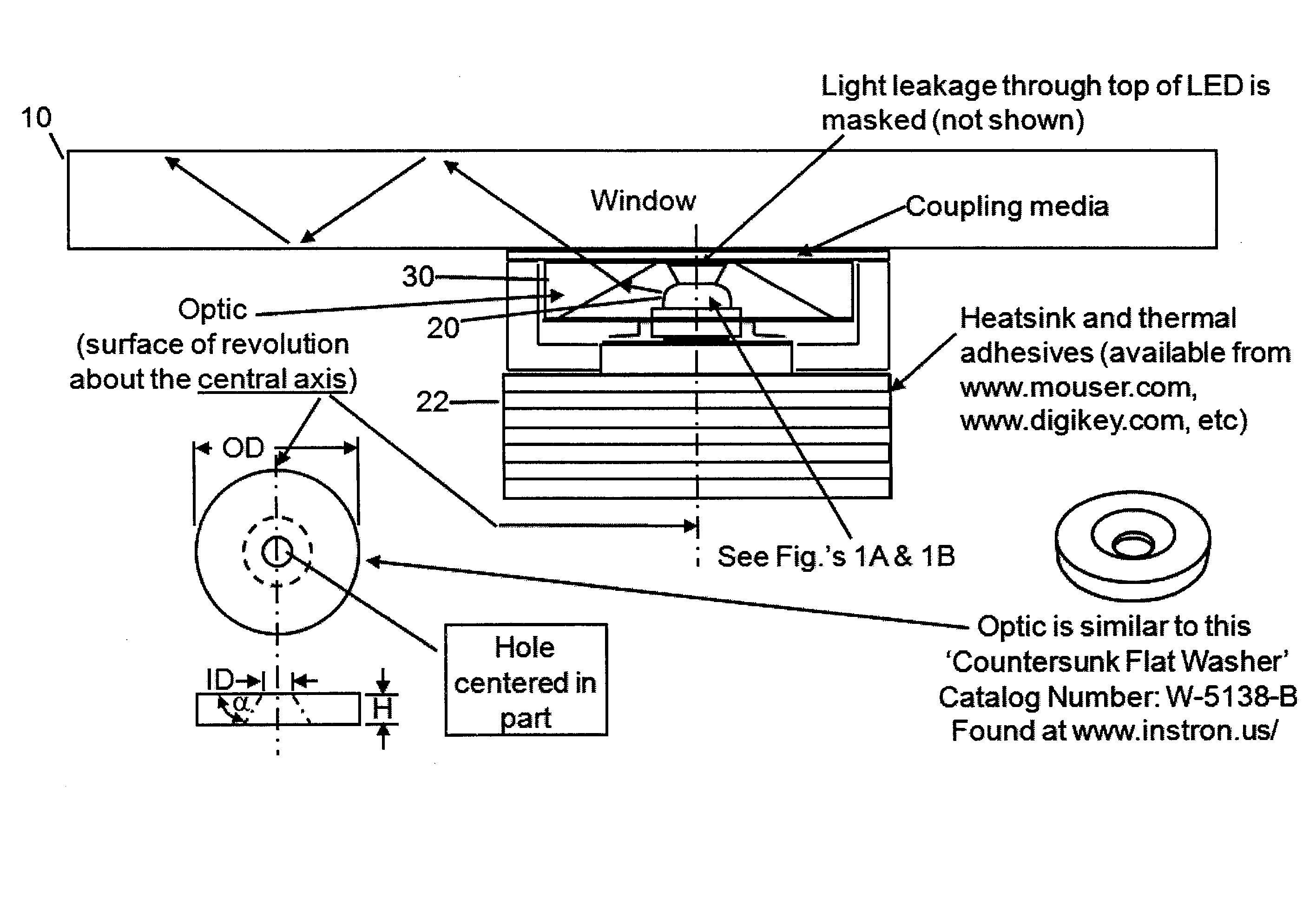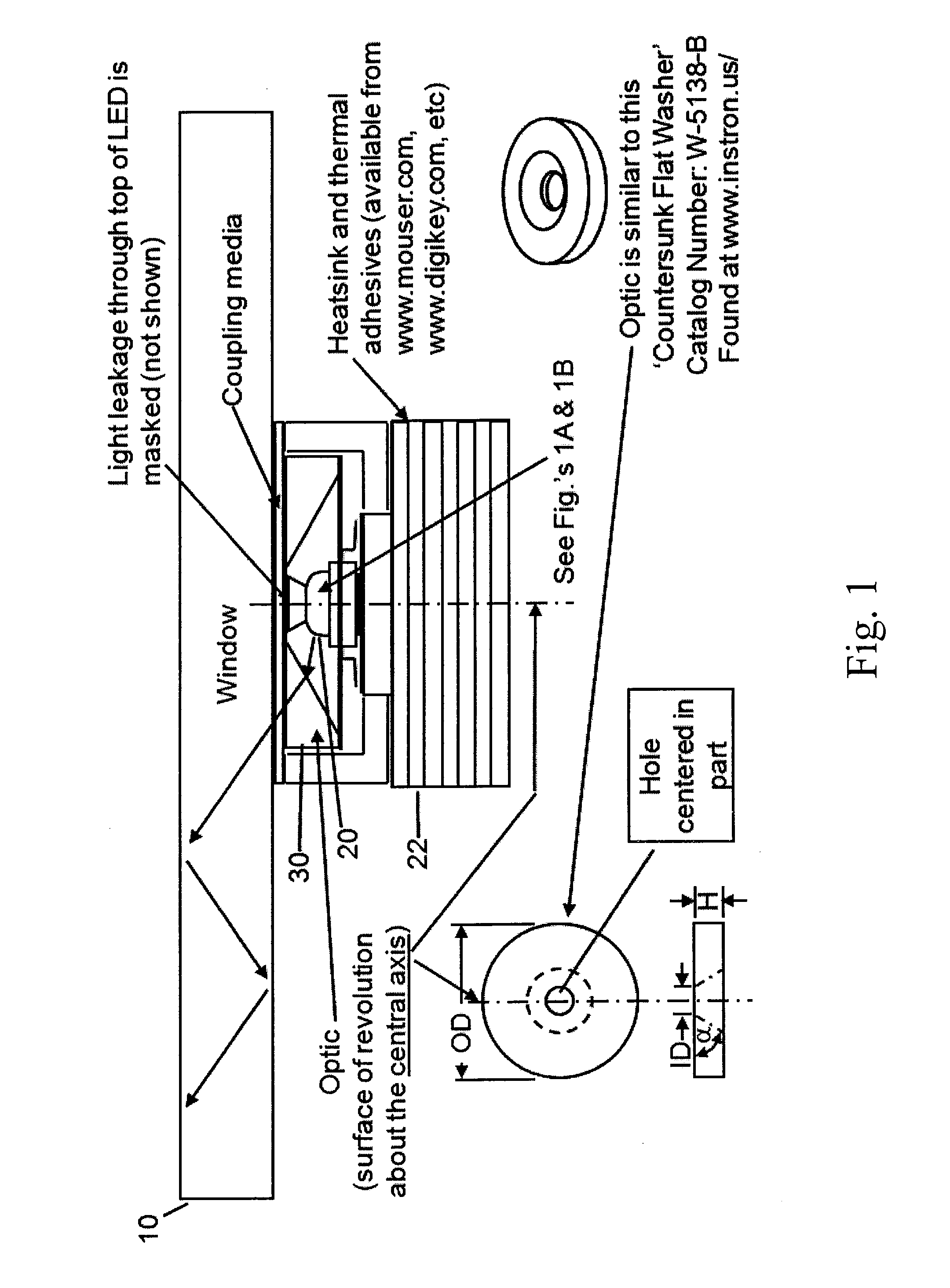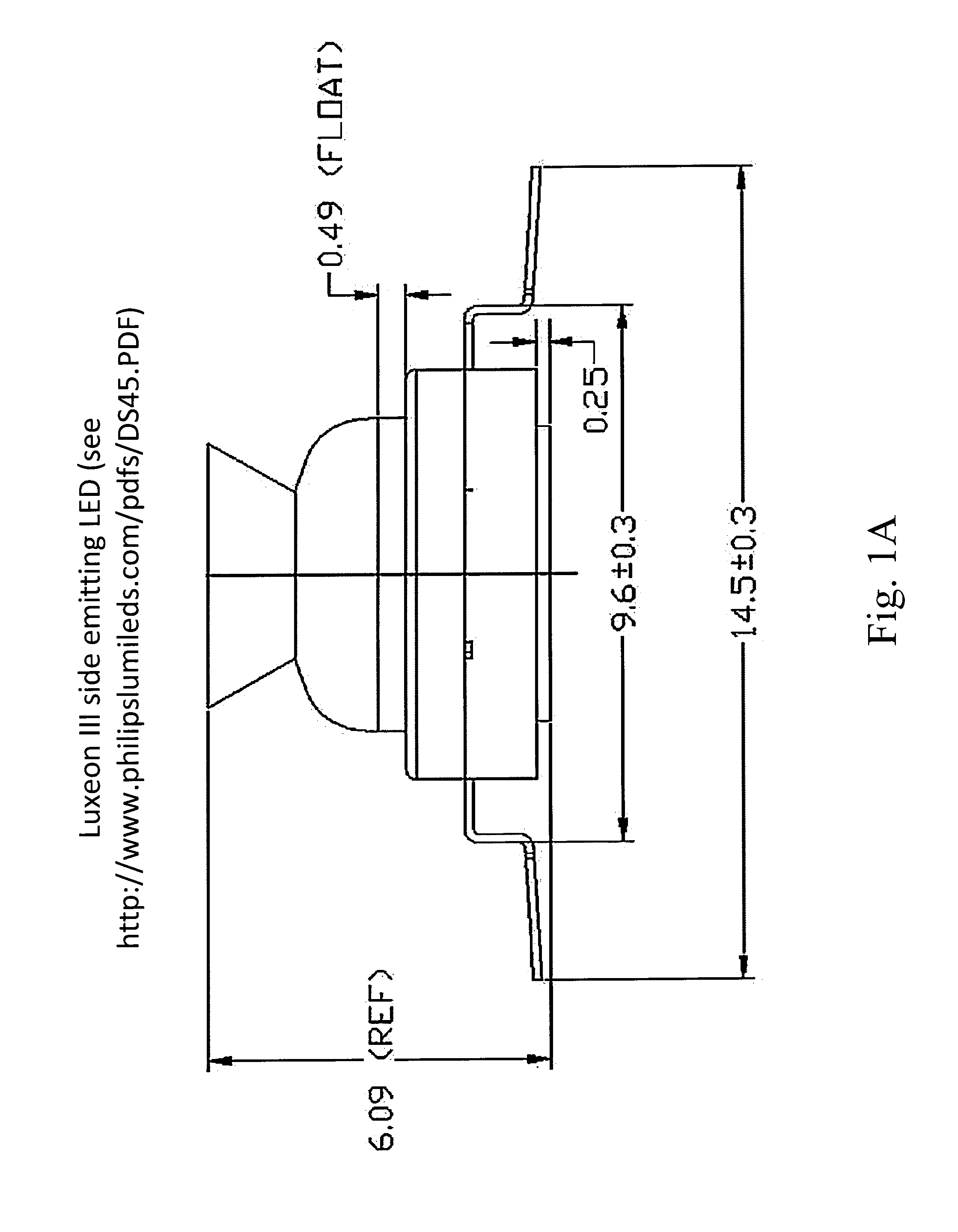Non-invasive injection of light into a transparent substrate, such as a window pane through its face
a transparent substrate and non-invasive technology, applied in the field of illumination of transparent substances, can solve the problem of inability to achieve the range of angles
- Summary
- Abstract
- Description
- Claims
- Application Information
AI Technical Summary
Benefits of technology
Problems solved by technology
Method used
Image
Examples
Embodiment Construction
[0018]The following is a description of some embodiments. It is not intended to limit the scope hereof, as other embodiments and arrangements may also achieve the same objective and operate and perform in a similar manner.
[0019]As shown in FIGS. 1 and 7, a side-emitting light emitting diode (see e.g., U.S. Pat. No. 6,598,998, filed May 2001, and commercially available e.g., Lumileds P / N LXHL-DW03, http: / / www.luxeonstar.com / ) is fitted with a special optic which is in the general shape of a thick countersunk flat washer made from clear acrylic or polycarbonate. That assembly is affixed to the face (not to an edge) of a window pane, e.g., via double stick tape such as 3M Scotch brand clear mounting tape, P / N 4010T. This arrangement, which is known as ‘prism-coupling’, (see, e.g., U.S. Pat. No. 4,545,642) forces light to travel within the window pane as if it were a light guide. Light is thereby trapped within the window pane via total internal reflection. This allows light to be coupl...
PUM
 Login to View More
Login to View More Abstract
Description
Claims
Application Information
 Login to View More
Login to View More - R&D
- Intellectual Property
- Life Sciences
- Materials
- Tech Scout
- Unparalleled Data Quality
- Higher Quality Content
- 60% Fewer Hallucinations
Browse by: Latest US Patents, China's latest patents, Technical Efficacy Thesaurus, Application Domain, Technology Topic, Popular Technical Reports.
© 2025 PatSnap. All rights reserved.Legal|Privacy policy|Modern Slavery Act Transparency Statement|Sitemap|About US| Contact US: help@patsnap.com



